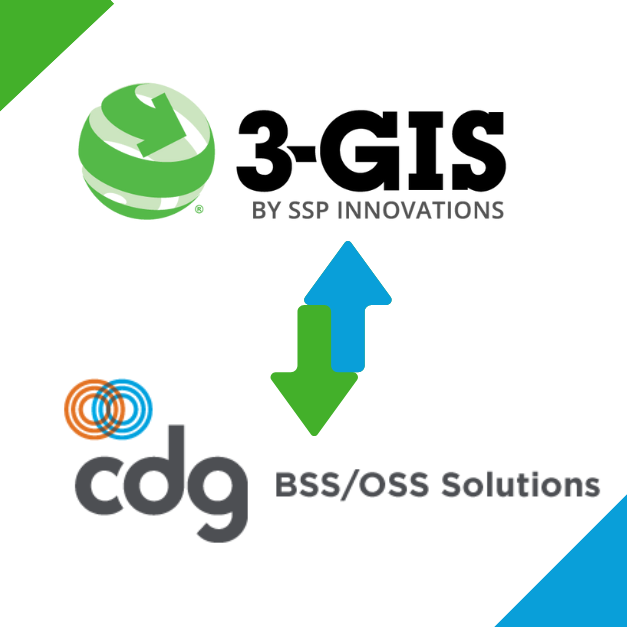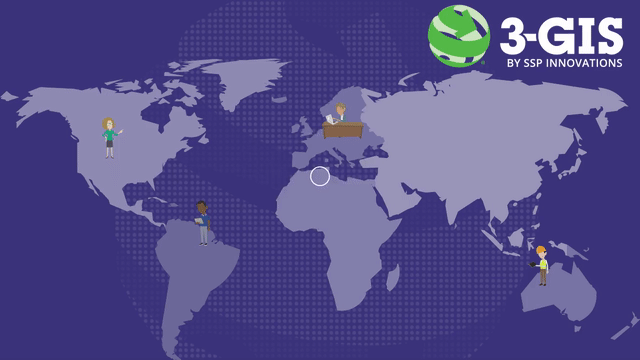Data protection, increased revenue generation, and improved customer experience are just a few of the many advantages that Communications Service Providers (CSPs) can count on when they enable their network management systems to open up to other business processes and applications through Application Programming Interfaces (APIs). On a recent Fiberside Chat episode, guests Michael Measels, Vice President of Product Management at 3-GIS, and Matt Sherrod, GTM Americas Service Provider at Blue Planet, joined host Hilary Kennedy to discuss customers’ desired shift from traditional models of fiber network management to open systems.
According to Sherrod, in the last 12-24 months the telecom industry has seen a shift from traditional “monolithic frameworks” to open systems. Three drivers behind this transition are these systems’ ability to:
> deliver new complex services faster
> generate new revenue
> improve customer experience
The necessity for scalable solutions in telecommunications business processes is one of the main factors justifying the deployment of APIs in telecom. The past year has seen CSPs demanding network management solutions that make scaling out a simple and hassle-free task. Scaling out, which often needs to be done in a very short period of time, requires systems that are very open and that are easy to integrate. According to Sherrod, “a big push for the ability to grow faster” explains this recent shift to “open frameworks” in telecommunications.
According to Sherrod, CSPs need “process improvements” and that only leaves them considering one type of solution - modern solutions, with integration capabilities that will support their needs.
“I was talking to one of the CTOs and he said, ‘Matt, we can't afford not to do this, because not only do we have to do it to meet our targets for growth, but we also have to run our business much more efficiently because we're hitting price targets and customer SLA (service-level agreement) is so much tighter than they were just five years ago.’"
Customer expectations are higher than ever, with the value of services being increasingly scrutinized. To be able to meet these expected criteria, a set of integrated GIS, inventory, and assurance are all essential. “Without an openness and without APIs to share information, [CSPs] would just be stuck in silos trying to throw manpower to solve the problem and you simply can't do that when you're in a market that has to scale this efficiently” Sherrod explained.
CSPs express having open systems available to them, which provide the ability to create the required connectivity while also understanding how the outside inventory is connected and provisioned, “is ultimately leading to greater efficiencies, allowing customers to provide that quality of service that they intend to provide and are committed to provide from an SLA [service-level agreement] perspective,” Measels states.
As for what the future holds in terms of openness and interoperability, Sherrod predicts the industry will continue to see organizations go through acquisitions, and the multiple systems that have been implemented over time will continue in operation. He warns that managing networks with 30 different siloed applications “breeds a huge amount of inefficiency as well as a lack of customer support” particularly when dealing with outages. Being able to provide new services or building out to an entirely new neighborhood while relying on the same source of truth across multiple stakeholders “has really provided huge value for our organizations and our customers. We see that as a desire that they're really wanting to move to more of this open flow type set of capabilities, as opposed to all of these siloed applications that they've been struggling with for so many years”, Sherrod outlines. Measels asserts that a shift to open systems is well underway and “would argue it's more of a demand that network management platforms become more open, that we turn to focusing on how that openness really allows for interoperability between systems.”
To conclude, APIs can drastically enhance telecommunications operations by providing interoperability and allowing users to work with one source of truth. Lending itself to much greater efficiencies that translate into real dollars in terms of man hours, and then more importantly, will translate into increased revenue. Not to mention, that customer experience and support are also optimized along the way.
Listen to this 17 minute podcast below.


